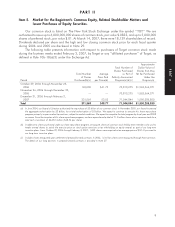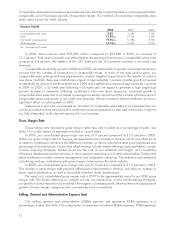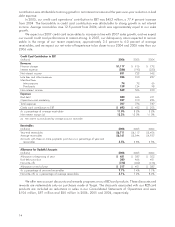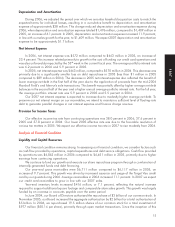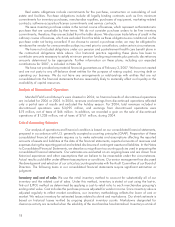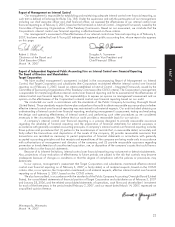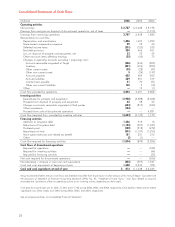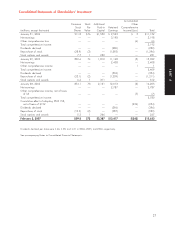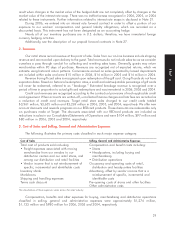Target 2006 Annual Report Download - page 37
Download and view the complete annual report
Please find page 37 of the 2006 Target annual report below. You can navigate through the pages in the report by either clicking on the pages listed below, or by using the keyword search tool below to find specific information within the annual report.
obsolescence if economic conditions change. Examples of relevant economic conditions include shifting
consumer demand, changing consumer credit markets or increasing competition. We believe these risks are
largely mitigated because substantially all of our inventory turns in less than six months. Inventory is further
described in Note 11.
Vendor income receivable Cost of sales and SG&A expenses are partially offset by various forms of
consideration received from our vendors. This ‘‘vendor income’’ is earned for a variety of vendor-sponsored
programs, such as volume rebates, markdown allowances, promotions and advertising, as well as for our
compliance programs. We establish a receivable for the vendor income that is earned but not yet received.
Based on provisions of the agreements in place, this receivable is computed by estimating the point at which
we have completed our performance and the amount earned. We perform detailed analyses to determine
the appropriate level of the receivable in aggregate. The majority of all year-end receivables associated with
these activities are collected within the following fiscal quarter. See further description in Note 4.
Allowance for doubtful accounts When receivables are recorded, we recognize an allowance for doubtful
accounts in an amount equal to anticipated future write-offs. This allowance includes provisions for
uncollectible finance charges and other credit fees. We estimate future write-offs based on delinquencies,
risk scores, aging trends, industry risk trends and our historical experience. Substantially all accounts
continue to accrue finance charges until they are written off. Accounts are automatically written off when
they become 180 days past due. Management believes the allowance for doubtful accounts is adequate to
cover anticipated losses in our credit card accounts receivable under current conditions; however,
significant deterioration in any of the factors mentioned above or in general economic conditions could
materially change these expectations. Accounts receivable is described in Note 10.
Analysis of long-lived and intangible assets for impairment We review assets at the lowest level for which
there are identifiable cash flows, usually at the store level. The carrying amount of assets is compared to the
expected undiscounted future cash flows to be generated by those assets over their estimated remaining
economic lives. Impairment testing of intangibles requires a comparison between the carrying value and the
fair value. Discounted cash flow models are used in determining fair value for the purposes of the required
annual impairment analysis. No material impairments were recorded in 2006, 2005 or 2004 as a result of
the tests performed.
Insurance/self-insurance We retain a substantial portion of the risk related to certain general liability,
workers’ compensation, property loss and team member medical and dental claims. Liabilities associated
with these losses include estimates of both claims filed and losses incurred but not yet reported. We estimate
our ultimate cost based on an analysis of historical data and actuarial estimates. General liability and
workers’ compensation liabilities are recorded at our estimate of their net present value; other liabilities are
not discounted. We believe that the amounts accrued are adequate, although actual losses may differ from
the amounts provided. We maintain stop-loss coverage to limit the exposure related to certain risks.
Income taxes We pay income taxes based on the tax statutes, regulations and case law of the various
jurisdictions in which we operate. Significant judgment is required in determining income tax provisions and
in evaluating the ultimate resolution of tax matters in dispute with tax authorities. Historically, our
assessments of the ultimate resolution of tax issues have been materially accurate. The current open tax
issues are not dissimilar in size or substance from historical items. Management believes the resolution of
the foregoing matters will not have a material impact on our consolidated financial statements. Income
taxes are further described in Note 23.
Pension and postretirement health care accounting We fund and maintain a qualified defined benefit
pension plan. We also maintain several smaller nonqualified plans and a postretirement health care plan
for certain retired team members. The costs for these plans are calculated based on actuarial calculations
using the assumptions described in the following paragraphs.
19
PART II


